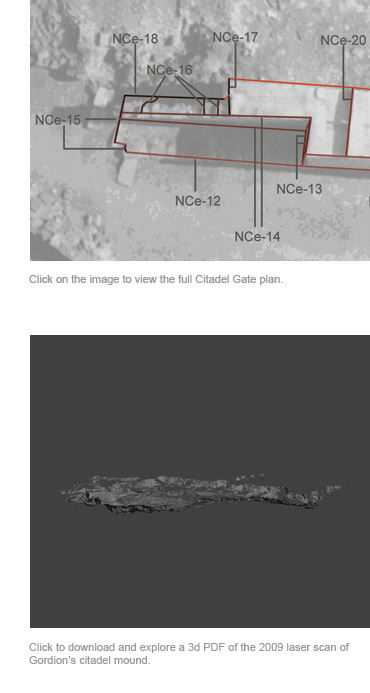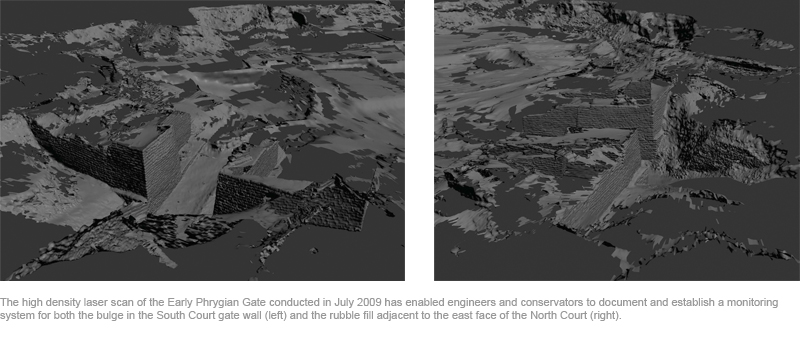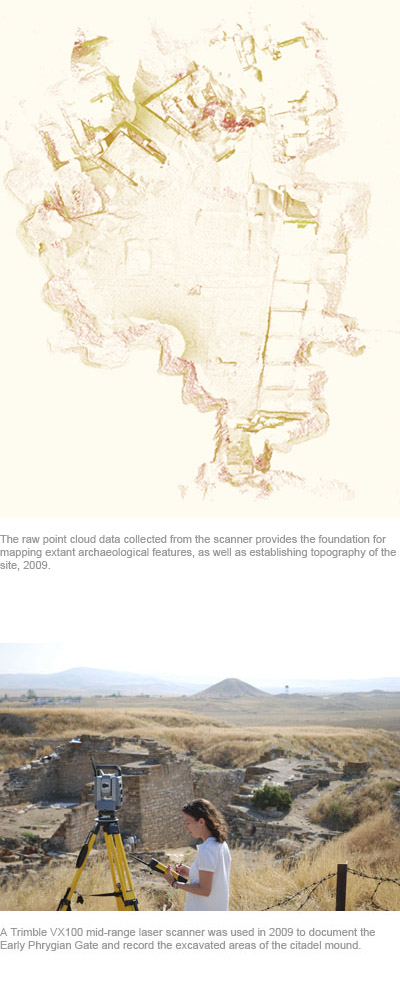Over the past few decades, concrete capping and grout injections have been implemented at the site as reactive measures to inhibit water ingress and prevent further bulging; however, a more diagnostic approach was necessary to respond to ongoing displacement and possible collapse, which may result from future seismic activity. Starting in 2006, the ACL developed an extensive documentation program, which included a condition survey of each exposed elevation to record cracks, spalls, open joints, missing chinking stones and bulging, and in 2009 conducted high-density laser imaging with a mid-range Trimble VX100 laser scanner.
Results of the documentation process indicate that many visible conditions occurred historically. Comparisons made between images taken during the 1950s excavation and the 2006 condition survey show a correlation between the additional Middle Phrygian building load and the innumerable compression cracks found below extant Middle Phrygian courses. However, the 1950s images reveal that the greatest degree of displacement—visible by the large, central bulge of the South Court elevation—occurred more recently. A method to quantify displacement in this potentially unstable region has recently been implemented through a joint effort between Middle East Technical University (METU) and the Architectural Conservation Laboratory (ACL). The monitoring program, which will determine whether bulging is resulting from constant incremental movement or cyclical fluctuation is critical to the design and execution of a stabilization program for the gate structure. |
 |





